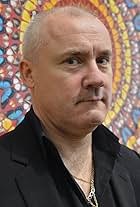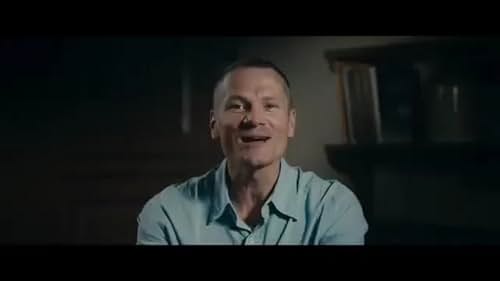Damien Hirst
- Actor
- Director
- Additional Crew
In his youth, Hirst was already considered a rebel, but his artistic talent also emerged. After graduating from school with a high school diploma, Hirst studied fine art at Goldsmiths College in London from 1986 to 1989. In 1988, while still a student, he was given the responsibility of planning an exhibition that took place in a warehouse on London's waterfront entitled "Freeze" and featured works by Hirst and his fellow students. These student exhibitions are a welcome opportunity for gallery owners, collectors and art supporters to find out about the talents of tomorrow and their potential. During "Freeze" Charles Saatchi became aware of Damien Hirst and began to promote him. Damien Hirst had his first solo exhibition in 1991 at the Woodstock Street Gallery in London with the title "In and Out of Love".
At this time, Hirst also showed his first "animal installation": "A Thousand Years" consisted of a large glass box containing a decaying cattle head on which maggots and flies feasted. Reactions were controversial, from euphoria about the innovation to disgust and disgust. Saatchi remained convinced of Hirst's extroversion and rebelliousness. In 1992, the first Young British Artists exhibition took place at the Saatchi Gallery in north London, where Hirst exhibited "The Physical Impossibility of Death in the Mind of Someone Living", probably his best-known work, alongside "A Thousand Years". He preserved a tiger shark in formaldehyde in a glass tank. This work received increased public interest again in 2006 as the shark began to decompose in its formaldehyde bath and the question arose as to whether it would reduce the value of the exhibit if it were replaced, since it would no longer be that Original would act.
Hirst continued to work on installing animals preserved in formaldehyde, creating the sheep entitled "Away from the Flock" in 1994, which was shown in the exhibition "Some Went Mad, Some Ran Away". A lobby of animal rights activists began to protest against Hirst's work, and an unknown person put black ink in the basin with the sheep, severely damaging the work of art, which cost £250,000 at the time. The controversial public discussion about his "animal installations" was fueled even more in 1995 when Damien Hirst was awarded the "Turner Prize". From then on, exhibitions around the globe followed. The extremism in his work also reached its peak in 1995 in the work "Two Fucking and Two Watching." Hirst wanted to exhibit a rotting cow and a rotting bull in New York, but the American health authorities stopped this because they feared that the smell of decay would cause nausea and vomiting among visitors.
In 1996, Damien Hirst began to branch out his creativity into different areas. He opened the restaurant "Pharmacy" in London's Notting Hill district, released his first short film "Hanging Around" and produced a pop music album called "Vindaloo". Hirst married the American Maia Norman, with whom he had two sons in 1995 and 2000. His autobiography "I Want to Spend the Rest of My Life Everywhere, with Everyone, One to One, Always, Forever, Now" followed in 1998. In the years that followed, Hirst continued to focus on new installations, music, and also charity work. The "New York Show" in 2000 became one of his greatest exhibition successes. Here he exhibited the work "Hymn", which Charles Saatchi purchased for 1 million pounds.
Questions or doubts about the authenticity of Hirst's works have repeatedly arisen, as he relies on helping hands for almost all of his exhibits and often there is not much more than his idea in the pieces. This is also the case with his "spin paintings" and "spot paintings", of which he is said to have painted just five of them himself. On June 1, 2007, he presented the platinum cast of a human skull entitled "For the Love of God" set with 8,601 diamonds at the White Cube in London. There is a 52 carat diamond on the forehead. The work was sold in August 2007 for 75 million euros. According to media reports, the object was the most expensive work of contemporary art. He achieved international attention with the auction of the work "Lullaby Spring" at Sotheby's (2007). At a price of around 14.5 million euros, it achieved the highest price ever achieved for a work by a living artist.
In the following years, Hirst became one of the richest artists ever. His fortune has already been estimated at a billion dollars in the media. In 2020 he received a solo exhibition at the Fondation Cartier in Paris for his new paintings of "Cherry Blossoms"; from June to November 2020 it was the artist's first museum exhibition in France.
At this time, Hirst also showed his first "animal installation": "A Thousand Years" consisted of a large glass box containing a decaying cattle head on which maggots and flies feasted. Reactions were controversial, from euphoria about the innovation to disgust and disgust. Saatchi remained convinced of Hirst's extroversion and rebelliousness. In 1992, the first Young British Artists exhibition took place at the Saatchi Gallery in north London, where Hirst exhibited "The Physical Impossibility of Death in the Mind of Someone Living", probably his best-known work, alongside "A Thousand Years". He preserved a tiger shark in formaldehyde in a glass tank. This work received increased public interest again in 2006 as the shark began to decompose in its formaldehyde bath and the question arose as to whether it would reduce the value of the exhibit if it were replaced, since it would no longer be that Original would act.
Hirst continued to work on installing animals preserved in formaldehyde, creating the sheep entitled "Away from the Flock" in 1994, which was shown in the exhibition "Some Went Mad, Some Ran Away". A lobby of animal rights activists began to protest against Hirst's work, and an unknown person put black ink in the basin with the sheep, severely damaging the work of art, which cost £250,000 at the time. The controversial public discussion about his "animal installations" was fueled even more in 1995 when Damien Hirst was awarded the "Turner Prize". From then on, exhibitions around the globe followed. The extremism in his work also reached its peak in 1995 in the work "Two Fucking and Two Watching." Hirst wanted to exhibit a rotting cow and a rotting bull in New York, but the American health authorities stopped this because they feared that the smell of decay would cause nausea and vomiting among visitors.
In 1996, Damien Hirst began to branch out his creativity into different areas. He opened the restaurant "Pharmacy" in London's Notting Hill district, released his first short film "Hanging Around" and produced a pop music album called "Vindaloo". Hirst married the American Maia Norman, with whom he had two sons in 1995 and 2000. His autobiography "I Want to Spend the Rest of My Life Everywhere, with Everyone, One to One, Always, Forever, Now" followed in 1998. In the years that followed, Hirst continued to focus on new installations, music, and also charity work. The "New York Show" in 2000 became one of his greatest exhibition successes. Here he exhibited the work "Hymn", which Charles Saatchi purchased for 1 million pounds.
Questions or doubts about the authenticity of Hirst's works have repeatedly arisen, as he relies on helping hands for almost all of his exhibits and often there is not much more than his idea in the pieces. This is also the case with his "spin paintings" and "spot paintings", of which he is said to have painted just five of them himself. On June 1, 2007, he presented the platinum cast of a human skull entitled "For the Love of God" set with 8,601 diamonds at the White Cube in London. There is a 52 carat diamond on the forehead. The work was sold in August 2007 for 75 million euros. According to media reports, the object was the most expensive work of contemporary art. He achieved international attention with the auction of the work "Lullaby Spring" at Sotheby's (2007). At a price of around 14.5 million euros, it achieved the highest price ever achieved for a work by a living artist.
In the following years, Hirst became one of the richest artists ever. His fortune has already been estimated at a billion dollars in the media. In 2020 he received a solo exhibition at the Fondation Cartier in Paris for his new paintings of "Cherry Blossoms"; from June to November 2020 it was the artist's first museum exhibition in France.









